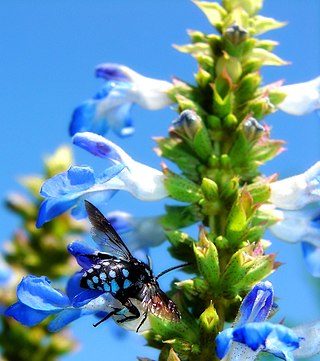
Rhododendron is a very large genus of about 1,024 species of woody plants in the heath family (Ericaceae). They can be either evergreen or deciduous. Most species are native to eastern Asia and the Himalayan region, but smaller numbers occur elsewhere in Asia, and in North America, Europe and Australia.

In biology, a subgenus is a taxonomic rank directly below genus.

Mormopterus is a genus of molossid microchiropterans, small flying mammals referred to as free-tailed bats. The genus has been the subject of several revisions, and the diversity of taxa centred on Australia were separated to a new genus Ozimops, and two monotypic genera, Setirostris and Micronomus. The species of Mormopterus, in this stricter sense, are only found in areas outside of Australia and West Papua.

Phalaenopsis, also known as moth orchids, is a genus of about seventy species of plants in the family Orchidaceae. Orchids in this genus are monopodial epiphytes or lithophytes with long, coarse roots, short, leafy stems and long-lasting, flat flowers arranged in a flowering stem that often branches near the end. Orchids in this genus are native to India, Taiwan, China, Southeast Asia, New Guinea and Australia with the majority in Indonesia and the Philippines.

Chelodina, collectively known as snake-necked turtles, is a large and diverse genus of long-necked chelid turtles with a complicated nomenclatural history. Although in the past, Macrochelodina and Macrodiremys have been considered separate genera and prior to that all the same, they are now considered subgenera of the Chelodina, further Macrochelodina and Macrodiremys are now known to apply to the same species, hence Chelydera is used for the northern snake-necked turtles.

Australian native bees are a group of bees that play a crucial role in the pollination of native plants. There are over 1,700 species of native bees in Australia, ranging from small solitary bees to the social stingless bees. Native bees are important for native ecosystems, providing pollination services to native plants, and hold value for Australian agriculture.

Amegilla is a large genus of bees in the tribe Anthophorini. It has been split into many subgenera, including Asaropoda, Micramegilla,Notomegilla and Zonamegilla.

Elseya uberrima is a Pliocene species of extinct Australian snapping turtle.

Amegilla cingulata is a species of blue-banded bee native to Australia. Currently, several scientific organizations are conducting research on how A. cingulata benefits agriculture through its distinctive "buzz pollination".

Amegilla bombiformis, commonly known as the teddy bear bee or golden haired mortar bee, is an Australian native bee in the family Apidae.

Thyreus caeruleopunctatus, commonly known as the chequered cuckoo bee, is a parasitic bee of the genus Thyreus, also called cuckoo bees. It is a stocky bee, notable for its brilliant metallic blue and black banded colors. Like other Thyreus, they are kleptoparasites of Amegilla species. They are found in Australia and Papua New Guinea.

Amegilla dawsoni, sometimes called the Dawson's burrowing bee, is a species of bee that nests by the thousands in arid claypans in Western Australia. It is a long tongued bee, of the tribe Anthophorini and genus Amegilla, the second largest genus in Anthophorini.

Thyreus lugubris, common name the domino cuckoo bee, is a species of Australian native bee belonging to the family Apidae, subfamily Apinae.

Amegilla asserta is a species of bee endemic to Australia, belonging to the family Apidae subfamily Apinae. Females forage by performing buzz pollination.
Elseya flaviventralis, the yellow bellied snapping turtle, is a species of large river snapping turtles from the Arnhem Land region of the Northern Territory of Australia. It is a member of the nominate subgenus Elseya.
Verticordia pholidophylla is a flowering plant in the myrtle family, Myrtaceae and is endemic to the south-west of Western Australia. It is a shrub with a single branch at the base and many side branches with overlapping yellowish leaves and greenish-white to cream, cup-shaped, feathery flowers.
Josephine Christina Cardale worked as an entomologist for CSIRO from 1967 to 2001. She was a collection manager of Hymenoptera at the Australian National Insect Collection.

Amegilla albiceps is a species of bee native to Australia. It has a southern temperate distribution, with records from South Australia and Victoria. A member of the genus Amegilla, it was described in 1951 by Tarlton Rayment. Adults have been found from October to April, and they have been observed visiting flowers of the mistletoe genus Amyema.
Zonamegilla is a large subgenus of the bee genus Amegilla. Species of this subgenus can be found throughout Australia, Europe and Asia. Some Zonamegilla are commonly referred to as blue-banded bees; however, the abdominal bands can also be orange, green, white or yellow, depending on the species.

Notomegilla is a subgenus of the bee genus Amegilla. It comprises two species – Amegilla chlorocyanea from southern and arid Australia, and Amegilla aeruginosa from northern Australia and Papua New Guinea. Both species share the characteristic feature of blue-green iridescent hairs on the legs.















